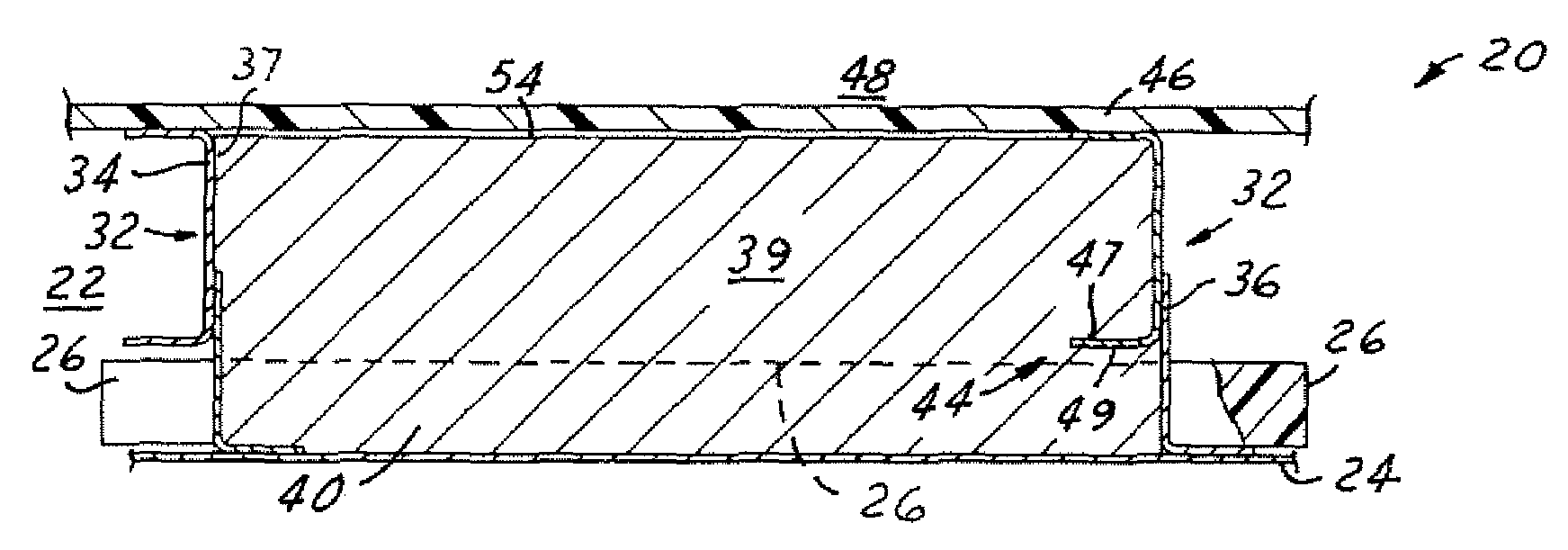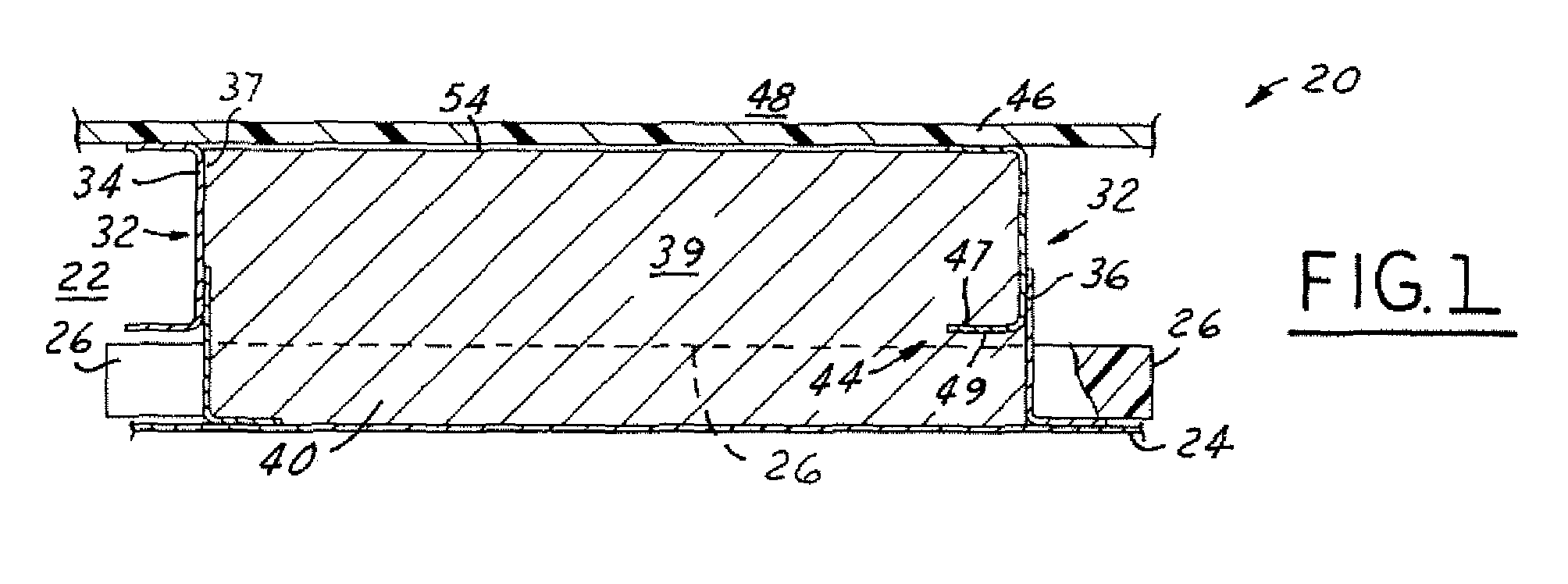Foam composite insulation for aircraft
a composite insulation and aircraft technology, applied in the field of insulation, can solve the problems of limited use of foams, insufficient noise absorption of thin closed cell foams in aircraft fuselages, and inability to provide adequate noise absorption of foams, and achieve superior gap closure and effective attachment to fuselages.
- Summary
- Abstract
- Description
- Claims
- Application Information
AI Technical Summary
Problems solved by technology
Method used
Image
Examples
Embodiment Construction
[0020]In the following figures the same reference numerals will be used to refer to the same components. The present invention is related to providing a material and method for insulating an aircraft 20. The invention calls for the use of multiple layers of insulation materials with at least one layer being made of a hydrophobic, open-celled foam material that provides acoustic and thermal insulation. The open-celled foam is compression fit within the airplane fuselage 22 so as to provide an effective attachment. Ten preferred embodiments are described below. However, as one of ordinary skill recognizes, many other possible embodiments utilizing at least one layer of hydrophobic, open-celled foam material are possible, and as such the preferred embodiments are not intended to be limiting.
[0021]Referring now to FIGS. 1 and 2, a preferred embodiment of the present invention is illustrated in which a fuselage is illustrated having an outer skin 24. Coupled to the inner surface 25 of th...
PUM
 Login to View More
Login to View More Abstract
Description
Claims
Application Information
 Login to View More
Login to View More - R&D
- Intellectual Property
- Life Sciences
- Materials
- Tech Scout
- Unparalleled Data Quality
- Higher Quality Content
- 60% Fewer Hallucinations
Browse by: Latest US Patents, China's latest patents, Technical Efficacy Thesaurus, Application Domain, Technology Topic, Popular Technical Reports.
© 2025 PatSnap. All rights reserved.Legal|Privacy policy|Modern Slavery Act Transparency Statement|Sitemap|About US| Contact US: help@patsnap.com



